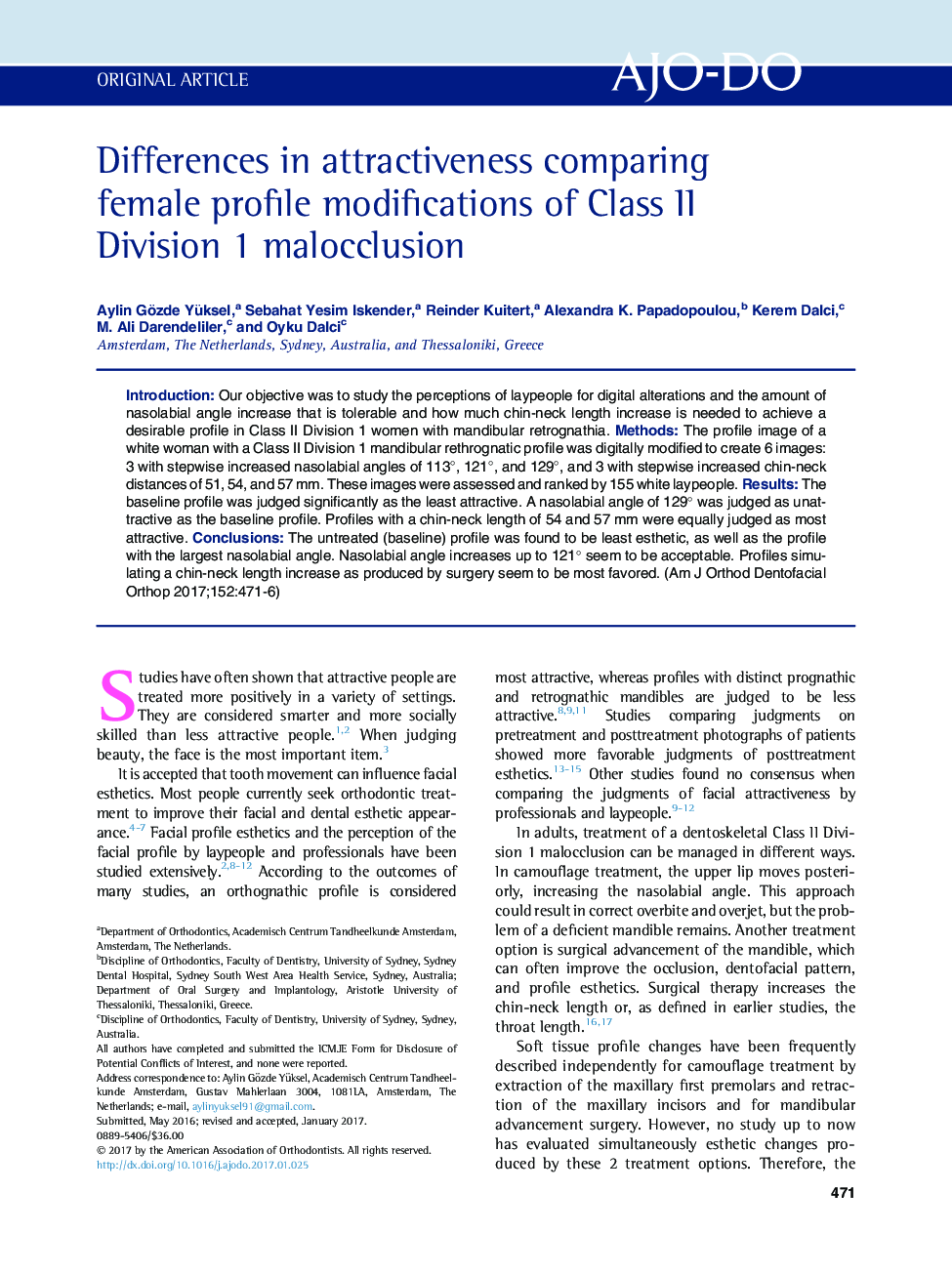| Article ID | Journal | Published Year | Pages | File Type |
|---|---|---|---|---|
| 5637381 | American Journal of Orthodontics and Dentofacial Orthopedics | 2017 | 6 Pages |
â¢The baseline profile was judged as least attractive.â¢Increase in chin-neck length was more accepted than increase in nasolabial angle.â¢The most acceptable nasolabial angle was 121° (4 SD).â¢The most favorable range of chin-neck length increase was 54 (1.5 SD) to 57 mm (2 SD).â¢There was no significant difference in the sexes in perceiving attractiveness.
IntroductionOur objective was to study the perceptions of laypeople for digital alterations and the amount of nasolabial angle increase that is tolerable and how much chin-neck length increase is needed to achieve a desirable profile in Class II Division 1 women with mandibular retrognathia.MethodsThe profile image of a white woman with a Class II Division 1 mandibular rethrognatic profile was digitally modified to create 6 images: 3 with stepwise increased nasolabial angles of 113°, 121°, and 129°, and 3 with stepwise increased chin-neck distances of 51, 54, and 57 mm. These images were assessed and ranked by 155 white laypeople.ResultsThe baseline profile was judged significantly as the least attractive. A nasolabial angle of 129° was judged as unattractive as the baseline profile. Profiles with a chin-neck length of 54 and 57 mm were equally judged as most attractive.ConclusionsThe untreated (baseline) profile was found to be least esthetic, as well as the profile with the largest nasolabial angle. Nasolabial angle increases up to 121° seem to be acceptable. Profiles simulating a chin-neck length increase as produced by surgery seem to be most favored.
